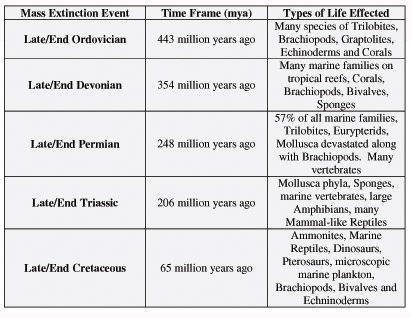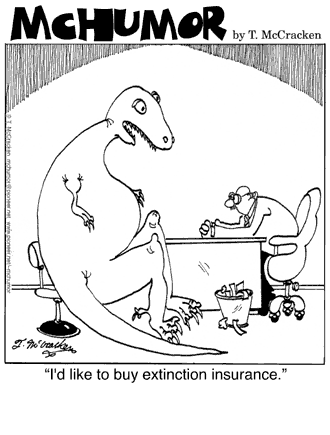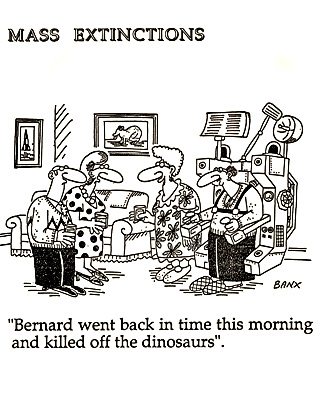
What is the sixth mass extinction?
Certainly, species go extinct every day. However, there’s a steep decline in populations of many animal species, from frogs and fish to tigers. Some scientists have warned that Earth is on the brink of a mass extinction like those that occurred only five times before during the past 540 million years.
Sixth Mass Extinction and the Big Five
Each of these ‘Big Five’ wiped out three-quarters or more of all animal species. It is not hard to realize that until human populations expanded, mammal extinctions were very rare.
According to a paper in Nature, mankind has unleashed the sixth known mass extinction in Earth’s history. Over the past 540 million years, five mega-wipeouts of species have occurred through naturally-induced events. Also, human activity has never been as aggressive in the history of Earth.
Inflicted by habitation loss, over-hunting, over-fishing, the spread of germs and viruses and introduced species, and by climate change caused by fossil-fuel greenhouse gases, and so confirms the study.
Evidence from fossils suggests that in the “Big Five” extinctions, at least 75 percent of all animal species disappeared. Paleobiologists at the University of California at Berkeley looked at the state of biodiversity today, using the world’s mammal species as a barometer. Until mankind’s big expansion some 500 years ago, mammal extinctions were very rare: on average, just two species died out every million years.
A case of When Man and Nature Collide?
What Happened in the Last Five Centuries
In the last five centuries, at least 80 out of 5,570 mammal species have disappeared, providing a clear warning of the peril to biodiversity. “It looks like modern extinction rates resemble mass extinction rates, even after setting a high bar for defining ‘mass extinction,” said researcher Anthony Barnosky.
More and more species now fall under the “critically endangered” and “currently threatened” categories of the Red List of biodiversity by the IUCN.
On the assumption that these species are gone and biodiversity loss continues, the sixth mass extinction is upon us.
Compared with nearly all the previous extinctions this mass extinction would be fast-track. Four of the “Big Five” events unfolded on scales estimated at hundreds of thousands to millions of years, inflicted in the main by naturally-caused global warming or cooling.
The most abrupt extinction came at the end of the Cretaceous, some 65 million years ago. A comet or asteroid slammed into the Yucatan peninsula, in modern-day Mexico, causing firestorms whose dust cooled the planet.
An estimated 76 percent of species died, including the dinosaurs. The authors admitted to weaknesses in the study. They acknowledged that the fossil record is far from complete. Also, that mammals provide an imperfect benchmark of Earth’s biodiversity and they need to work further to confirm their suspicions.
But they described their estimates as conservative and warned a large-scale extinction would have an impact on a timescale beyond human imagining. “Recovery of biodiversity will not occur on any time frame meaningful to people,” said the study.
Room For Hope?
“Evolution of new species typically takes at least hundreds of thousands of years, and recovery from mass extinction episodes probably occurs on timescales encompassing millions of years.”
Even so, they stressed, there is room for hope. “So far, only 1-2% of all species have gone extinct in the groups we can look at clearly. So by those numbers, it looks like we are not far down the road to extinction. We still have a lot of Earth’s species to save,” Barnosky said. Even so, “it’s very important to devote resources and legislation toward species conservation if we don’t want to be the species whose activity caused a sixth mass extinction.”
French biologist Gilles Boeuf, president of the Museum of Natural History in Paris, said the question of a new sixth mass extinction was in focus first in 2002.
So far, scientists have identified 1.9 million species. Between 16,000 and 18,000 new ones, essentially microscopic, are new to the list each year. “At this rate, it will take us 1,000 years to record all of Earth’s biodiversity. That is probably between 15 and 30 million species” said Boeuf.
“But at the rate things are going, by the end of this century, we may well have wiped out half of them, especially in tropical forests and coral reefs.”
In 2015, Filmmaker Louie Psihoyos, along with activists, scientists and others, released a film drawing attention to mankind’s role in a potential loss of at least half of the world’s species. Below is the trailer and you can watch the full movie starring Elon Musk here.
How did you feel reading those lines?
Credit: Excerpts from Discovery
Check out our articles on Seychelles Sheath-Tailed Bat, Yangtze River Dolphin, Bois Dentelle, When Man and Nature Collide












When Einstein wrote: “Problems cannot be solved by thinking within the framework in which they were created”, applied to the Sixth Mass Extinction, one must ponder, does our species, that created the problem, even contain the potential to either intellectually define and implement a solution. Probably not!
That is not to say that there is no possible solution, only that, in principle, it can’t be of human intellectual origin!
http://www.energon.org.uk